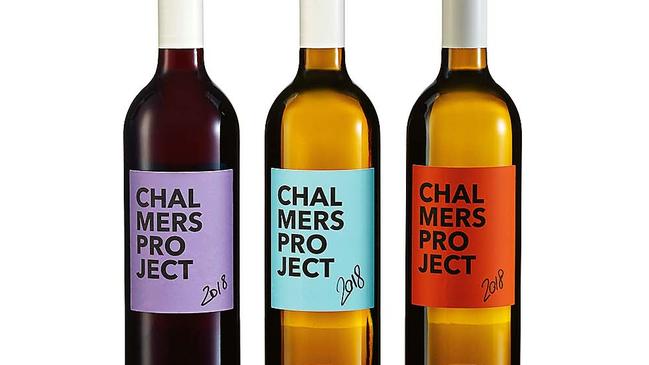2018 Chalmers Project Nero di Troia; 2018 Chalmers Project Pecorino VCR 485; 2018 Chalmers Project Ribolla Gialla
Chalmers Wines and Yalumba are the babysitters for most of the Australian wineries wanting to plant new varieties or clones.

Chalmers Wines and Yalumba are the babysitters for most of the Australian wineries wanting to plant new varieties or clones. Happily, each covers different groups of varieties. Yalumba is first port of call for those wishing to trial (or commercially plant without viti-foreplay) the vines of Burgundy; newly selected clones from Professor Bernard Paul at the University of Dijon continue to arrive. Chalmers has chosen a far larger pool in which to fish: Italy has 377 varieties, with well over 300 yet to be trialled here; France has 204, with 38 arrivals. (All numbers are for wine grapes, and don’t include table grapes.)
Kim Chalmers says it costs about $4000 per selection simply to go through the shipping, import and quarantine process. All being well, it will include one or two small potted vines. All was not well with the last group of new varieties, which were killed in the fumigation step by quarantine officials, adding a year to the usual six or seven before the vines are released. Then there are the costs of establishing and maintaining the mother block, taking as many cuttings as possible each year to create a sufficient stock of healthy rootlings to offer them for sale.
So you decide to take the plunge and plant some of the new arrivals. How do you know what awaits if you plant vines never before grown in Australia? This is where the 11 Chalmers Project wines come in. They are made in identical fashion stripped to the bare minimum. The white wines are cool fermented in temperature controlled stainless steel tanks using a single cultured yeast. Additions other than SO2 are avoided if possible and the wine is fined, filtered and bottled by mid-year. Red wines are warm fermented on skins, pressed when dry, and thereafter created in a similar fashion to the white wines.
For more information, go to chalmers.com.au.
2018 Chalmers Project Nero di Troia A red variety that most likely originated in the town of Troia in the region of Puglia, it is correctly called Uva di Troia, and nearly disappeared during the 20th century before rising phoenix-like to become highly sought after, either as a blend component or as an elegant, medium-bodied wine. Its one problem in hot regions is sunburn. 12% alc, screwcap 92 points, drink to 2025, $32
2018 Chalmers Project Pecorino VCR 485 This is the best Pecorino clone. When the juice was first tasted by Chalmers it was the most intense and delicious of any Project wine ever trialled. And it shows in this wine, along with high natural acidity. Warm climate. 13.5% alc, screwcap 95 points, drink to 2025, $32
2018 Chalmers Project Ribolla Gialla A variety that performs best in cool climates, and stood out from its other ’18 siblings. It has citrus (lemon and orange) fruit strung along with mouth- watering acidity, and a hint of pepper reminiscent of grüner veltliner. 11.5% alc, screwcap 93 points, drink to 2020, $32



To join the conversation, please log in. Don't have an account? Register
Join the conversation, you are commenting as Logout